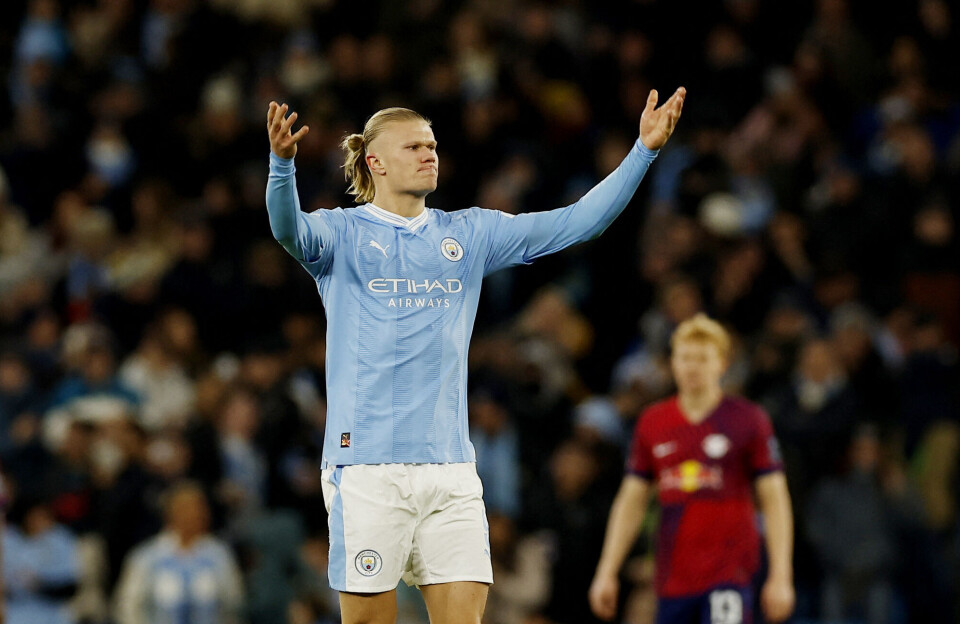THIS CONTENT IS BROUGHT TO YOU BY THE University of Agder - read more

Why are we so fascinated by great football players like Beckham and Haaland?
They possess charisma and score goals for our favourite teams. This is how we are influenced by today’s football heroes.
“Football players are in many ways today’s gladiators. Football is, after all, the biggest sport in the world, in terms of the number of players, spectators, and economic impact,” says Tor Geir Kvinen, associate professor at the University of Agder (UiA).

He has a PhD in experience economy with football as his field of interest. He has long noticed that today’s football players are often seen as heroes.
Iconic brands
Names like David Beckham and Erling Braut Haaland have become brands, even outside the boundaries of the sport.
They are known for their performances on the field, but also for appearing on magazine covers, soda bottles, underwear, or writing autobiographies. They can also be seen in movies, TV series, or have their own documentaries.
The popular Netflix documentary about Beckham sheds light on his success in the commercial market.
Beckham among the first
Beckham was one of the first football players to capitalise on the opportunities to build his own brand.
“The commercial market has grown much larger than just football. Beckham is a brand with a genuine interest in both football and fashion. Not unlike Braut Haaland,” Roy Emanuelsen says.
He is an associate professor at UiA and specialises in communication and sports journalism.
“The sum of this is delightful media attention, but at the same time, the media has to compete for attention with these players’ personal channels,” he adds.
Pop stars who score goals
Big companies want to associate themselves with these stars, and they invest large sums to have the players’ name or face associated with their products.
Kvinen, who specialises in experience economy, predicts that this type of brand building will play an even bigger role in the world of football. It will also affect how the sport is run in the future.

“Famous personalities as brands have exploded in recent years. Money and branding have taken a prominent place in the football world. The economic aspect contributes to good sporting results and vice versa,” he says.
It started with televised football matches
But how did we get here? To understand that we must go back in time:
In the 1860s, football players wrote stories and analyses for the press. A hundred years later, in the 1950s, there was a strong focus on individual players, but building strong personal brands remained a challenge.
According to Emanuelsen, this changed in 1969 when the national broadcaster NRK started televising Tippekampen. Football players achieved the status of pop stars.
This led to a great interest in betting on English matches in Norway. Football coverage in the tabloids also grew, with VG in the lead.
“Most people born after the mid-1950s adorned their children’s rooms with posters of football players. This took off when Tippekampen arrived. Only pop stars could compete for wall space,” he says.
Boys from ordinary backgrounds
The football stars make it easy for us to consume them as brands: They have charisma and hero status, but are perhaps most liked by for being ordinary boys from ordinary backgrounds who have managed to rise to the top, according to Emanuelsen.
“It is typical for some of the big football heroes that they don’t necessarily desire the enormous attention, but they still end up receiving it. This was the case with Start and national team player Erik Mykland, and is probably also the case with Erling Braut Haaland,” he says.
“They dare to answer and do things as they want. That sets them apart and makes them even more popular, without necessarily having a strategy behind their statements and actions,” he says.
400 million
The researcher highlights the most illustrative example of brand power when Beckham was sold to another club. The shirt sales revenue immediately increased by 400 million.
“We see that football players have an economic impact on companies associated with them. The brand value often exceeds the athletes’ salary income.”
“The highest-paid football players have weekly salaries of several millions, and on top of that, they have significant income from personal sponsorship deals. That’s why we have these ongoing discussions about how the values should be distributed between the club, associations, and the individual,” says Kvinen.
A matter of sportswashing
But is having a strong brand sufficient to conceal problems for companies or events? Sportswashing has become a challenge for the sports industry.
The goal of sportswashing is to divert attention away from negative aspects associated with the sport.
When Arabian clubs, for example, acquire high-profile players like Cristiano Ronaldo, many see it as sportswashing. Or when stars like Beckham become ambassadors for the heavily criticised World Cup in Qatar.
“Many supporters are beginning to question the reputation of football. Are they willing to do anything for money? What are the most important values in football? More people should question where the money in football comes from and where it goes,” says Kvinen.

This content is paid for and presented by the University of Agder
This content is created by the University of Agder's communication staff, who use this platform to communicate science and share results from research with the public. The University of Agder is one of more than 80 owners of ScienceNorway.no. Read more here.
More content from the University of Agder:
-
This researcher has helped more economics students pass their maths exams
-
There are many cases of fathers and sons both reaching elite level in football. Why is that?
-
How we used plants to protect ourselves from evil
-
What is it like for nurses to promote health behind bars?
-
This can make life easier for new maths teachers
-
Norwegian women were burned at the stake here




































